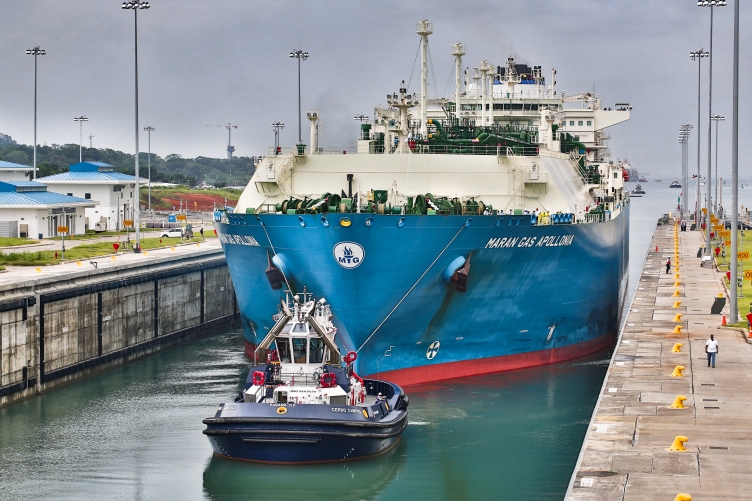
In anticipation of LNG transit needs, the Panama Canal will lift self-imposed daylight and encounter restrictions on LNG vessels, deputy administrator Manuel Benitez announced on Thursday during a press briefing at the World Gas Conference in Washington, DC. The changes will go into effect 1 October 2018.
“Lifting daylight restrictions means LNG vessels will be able to transit the locks at night – as vessels in other segments currently do,” explained Benitez during a presentation. “Lifting encounter restrictions means LNG vessels will be able to navigate Gatun Lake at the same time, allowing two different LNG vessels to transit the Canal the same day in two different directions. Together, these changes will provide more flexibility and time during the day to transit LNG vessels, and result in an opportunity for LNG shippers to compete for a second booking slot.”
Currently, with these restrictions in place, the Panama Canal provides one dedicated reservation slot to LNG carriers per day. This equates to seven dedicated LNG booking slots per week. This is more than the current demand from LNG shippers, who average 5.5 transits per week.
In addition to the one dedicated slot, the Canal frequently works with customers to transit vessels that arrive without a prior reservation, so long as the day’s vessel mix allows.
“By lifting these restrictions on October 1, the Canal will unleash even more capacity for LNG,” said Silvia de Marucci, executive manager, Economic Analysis and Market Research Division at the conference. “In addition to the one reservation it guarantees each day, the Canal will soon offer LNG shippers, for the first time, the opportunity to compete among our wider vessel segments to book a second daily slot.”
The opportunity to compete for this new, second slot has never been available to LNG shippers before. And it will be offered on top of the Canal’s continued efforts to transit LNG vessels that arrive early for their reservations or without one altogether – a commitment to customer service which has been evident ever since the Expanded Canal unlocked the waterway to LNG in June 2016.
Over the past two years, the waterway has welcomed a total of 372 LNG transits. All LNG vessels that arrived with reservations were transited on time, except for one which arrived late. Of the 35 that arrived without a reservation, the Canal transited 30 of these ships the same day, and the remaining five transited with limited wait. Today, there is currently no wait for LNG vessels to transit the waterway.
The Canal’s decision to lift these restrictions follows it gaining considerable experience transiting LNG vessels the past two years. It also comes at an opportune time in the market. According to the Canal, LNG transits at the waterway are expected to grow by more than 50% by the end of FY 2018 compared to FY 2017, for which it stands ready to receive.
As the trade of LNG continues to rise; these new measures will ensure the Canal remains one step ahead of demand and is able to offer the same service, flexibility and opportunity that it always has to keep global trade moving safely and swiftly.